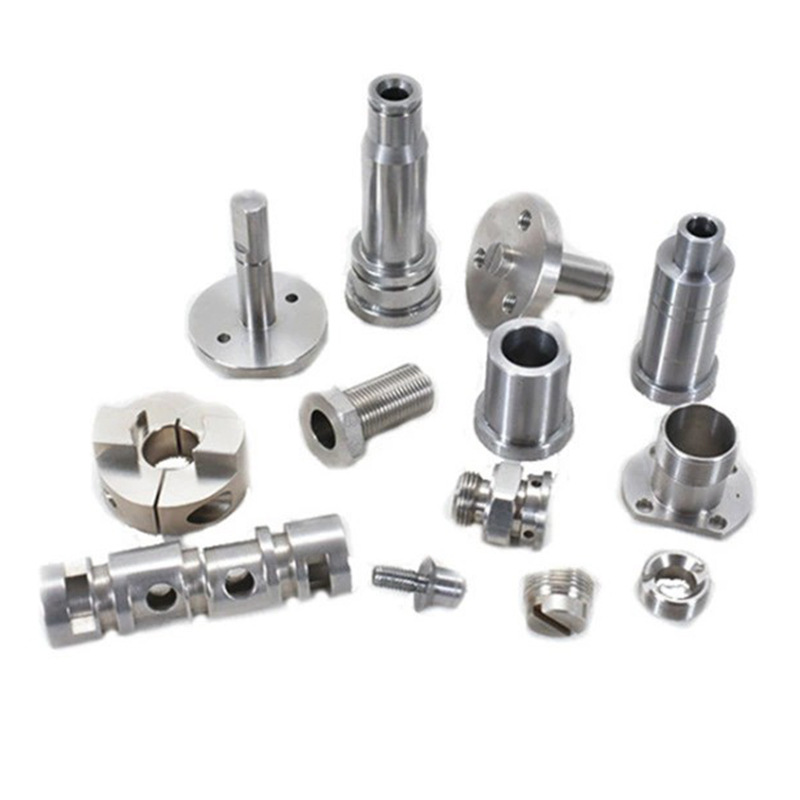Better Touch Better Business
Contact Sales at MDM Metal
After the assembly of the new mold is completed, it is necessary to complete the machine installation and sampling, which means taking some products as samples and going to the quality control department for dimensional measurement to see if they are qualified.
After completing this step, the mold will proceed to the mass production stage. During the mass production process of molds, various structural and design issues are likely to arise.
01 tensile fracture
reason:
1> The gap between the convex and concave molds is too small (including the overall gap and the local gap caused by the deviation of the convex and concave molds)
2> The concave mold has no rounded corners and excessive roughness
3> The material is too hard and has poor plasticity
4> The drawing height exceeds the limit of material plastic deformation (the number of drawing times is one)
5> The second deep drawing material was not in place
6> Insufficient edge pressing, wrinkling or depression at the edge of the raised platform after deep drawing
 Improvement measures:
Improvement measures:
1> Trim the gap between the convex and concave molds to the normal value
2> Grind to normal value according to product requirements
3> If the material exceeds the specifications too much, replace the material, and increase the R angle and brightness of the concave mold accordingly to avoid it
4> It can be deep drawn several times
5> Adjust the positioning to ensure correct positioning
6> The rubber material plate of the concave convex mold adds elasticity and increases the edge pressing force
02 Bursting and deviation of sprouts
reason:
1> The pre punching edge of the sprouting punch is broken
2> Deviation of convex and concave molds (one-time sprouting)
3> The gap between the convex and concave molds is too small (pre punching and sprouting)
4> Excessive burrs or broken punch in pre punched holes, holes not punched out
5> The punch is broken (the working part of the sprouting punch is missing)
Improvement measures:
1> Replace the sprouting punch
2> Adjust the position of the convex and concave molds
3> Adjust the gap between the convex and concave molds to a moderate level
4> Replace the pre punching punch
5> Replace the sprouting punch
03 Insufficient sprouting height
 reason:
reason:
1> The pre punched hole diameter is too large
2> Insufficient depth of the working part of the sprouting punch into the concave mold
3> The diameter of the punch is too small and the gap with the concave mold is too large (or the diameter of the concave mold is too large)
4> The pre punched material was misaligned at the sprouting station, resulting in one side being high and the other being low after sprouting
Improvement measures:
1> Modify the pre punched hole to an appropriate diameter (if the pre punched hole is too small, it will cause the sprouting to be too high)
2> Extend the working length of the sprouting punch
3> Modify the sprouting punch to the required diameter, and the same applies to the concave mold
4> Adjust the positioning of the two stations for sprouting or pre punching, depending on the position of the sprouting hole
04 Unsmooth material removal
reason:
1> The template magnetism is too high
2> . Positioning too tight
3> The spring of the stripper pin has failed (the stripper plate is also the same)
4> There is no stripper pin on the stripper plate
5> The increase in extrusion width of the material under pressure is caused by poor positioning in the subsequent process
6> Poor flatness of material deformation
7> Insufficient positioning on the mold after product folding or forming
8> The slider is stuck and the movement is not smooth
9> For composite molds, the material and waste are not completely separated
Improvement measures:
1> Demagnetize the template
2> Adjust positioning based on the correctness of product positioning
3> Replace the stripper pin spring (the same applies to the stripper plate)
4> Add a top material pin to the stripper plate
5> It is best to use internal localization or locate in a location without variation
6> Adjust the flatness of the material
7> Increase the yield on the mold
8> Trim the slider to make it smooth
9> Add top material pins to the upper and lower molds to ensure smooth separation of materials and waste materials
05 screws are easy to break
Screw breakage:
divided into normal and abnormal damages
Reason for normal damage:
1> The force design of the screws themselves is insufficient (incorrect specifications or insufficient quantity)
2> The material of the screw itself is too poor
3> The normal wear and tear of the screw has reached the stroke and it has broken
Improvement measures:
1> Change the screw size to larger, such as increasing the quantity of M8 or M10 (depending on the actual situation)
2> Replace screws with new materials
3> Maintain the mold for replacement
Abnormal damage:
1> Forced tightening due to misalignment between two boards
2> The convex concave gap is too small (especially for forming molds)
3> For molds with air cushions, if the top rod is too long and the air cushion pressure is too high, it will cause the lower mold screw to break
4> Folding, forming die, stamping two pieces of material or punching two times
Improvement measures:
1> Expanding or re drilling holes
2> Adjusting the clearance between the convex and concave molds
3> Standardization of top rod and mold air cushion plate
4> Try to avoid punching twice or two pieces of material as much as possible
Copyright © 2015-2023 MDM Metal All Rights Reserved
 Send A Message
Send A MessageIf you are interested in our products and want to know more details,please leave a message here,we will reply you as soon as we can.